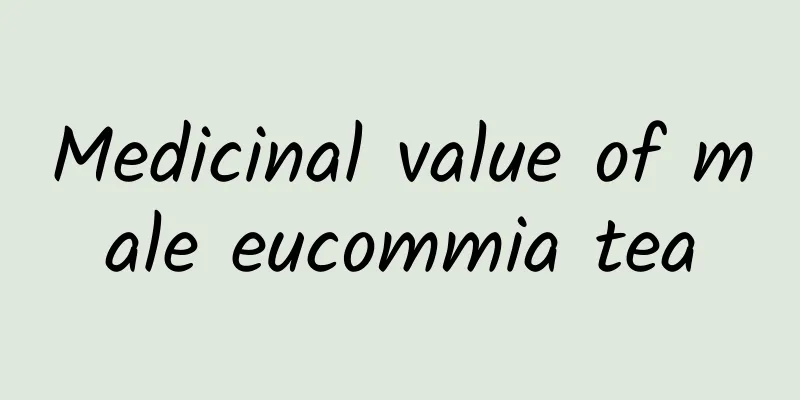The efficacy of using angelica and chuanxiong together

|
Angelica and Chuanxiong are both traditional Chinese medicines. Using angelica can replenish blood, calm the mind, soothe the nerves and nourish the heart. When the elderly suffer from insomnia, chest tightness and shortness of breath, drinking angelica soaked in water can effectively relieve the symptoms. Compared with Angelica sinensis, Chuanxiong is good at promoting blood circulation, removing blood stasis, and promoting ventilation and relieving the mind. Regular consumption can also relieve gastritis and cholecystitis. The effect is better when consumed together. Let’s learn about the effects of consuming the two together. Effects of Angelica and Chuanxiong Benefits of Angelica 1. Nourish blood Angelica sinensis has a sweet and strong taste, so it is specifically used to nourish blood. It is the best blood tonic and is suitable for symptoms such as pale or sallow complexion, fatigue, pale lips and nails, dizziness, palpitations and insomnia caused by heart and liver blood deficiency. Angelica sinensis is combined with Rehmannia glutinosa, White Peony Root and Ligusticum chuanxiong to form a representative blood-tonifying prescription - "Siwu Decoction", which has the function of regulating menstruation and replenishing blood, and is especially suitable for the treatment of postpartum blood deficiency. 2. Lubricate the intestines and promote bowel movements Traditional Chinese medicine believes that essence and blood have the same origin. People with blood deficiency also have insufficient body fluids. Deficiency of intestinal fluid can easily lead to constipation. Angelica can moisten the intestines and promote bowel movements. It is often used together with hemp seed, bitter almond, and rhubarb to treat constipation due to blood deficiency. It is combined with saposhnikovia divaricata, chuanxiong, peony, rhubarb, mint leaves, ephedra, etc. to form Fangfeng Tongsheng Powder, which can relieve heat and promote bowel movements. 3. Regulate menstruation and promote blood circulation Angelica sinensis has a light and pungent taste, so it can promote blood circulation, unblock menstruation and regulate menstruation, and relieve pain. It is especially suitable for women, especially for symptoms such as irregular menstruation, dysmenorrhea, and amenorrhea due to blood deficiency. It was called the "holy medicine of gynecology" by the ancients. It is combined with peach kernel, safflower, rehmannia root, white peony root and chuanxiong to form a famous gynecological prescription - Taohong Siwu Decoction, which is often used for early menstruation and dysmenorrhea. 4. Effect on uterine smooth muscle Angelica volatile oil has an inhibitory effect on the isolated uterus, causing the rhythmic contraction to relax and counteracting uterine contraction. 5. Anti-cancer effect Angelica sinensis can be widely used in various tumors, especially gynecological tumors, and is most suitable for those with stagnant Qi and blood, and blood stasis. Angelica sinensis can also be used to strengthen the body and fight cancer in patients with blood deficiency and emaciation, or those with weak vital energy after surgery, radiotherapy, or chemotherapy. 6. Anti-aging Angelica decoction has a significant effect on the learning and memory of mice. Using the A-maze method, Angelica can improve dementia caused by aluminum chloride, reduce the level of peroxide esters and the activity of type B monoamine oxidase in the brain of dementia mice, and can treat Alzheimer's disease. 7. Prevent and treat frostbite Traditional Chinese medicine believes that although frostbite occurs on the skin, it is actually mostly caused by insufficient Yang Qi in the body, invasion of external cold, failure to expand Yang Qi, and blood stasis caused by cold. Therefore, warming the meridians and dispelling cold, promoting blood circulation and removing blood stasis, reducing swelling and relieving pain are often used in treatment. Angelica, ginger and mutton soup comes from "Treatise on Febrile and Miscellaneous Diseases". The angelica in the formula nourishes blood and promotes blood circulation, ginger warms the yang and dispels cold, and mutton replenishes deficiency and produces blood. The whole formula has the effects of nourishing blood and promoting blood circulation, warming the yang and dispelling cold. 8. Immune effect Angelica and its extracts sodium ferulate and angelica polysaccharides have a significant stimulating effect on the monocyte-macrophage system, and also have immune regulation and recovery effects on immune-compromised organisms. Angelica sinensis also promotes the transformation of lymphocytes in healthy people. Effects of Chuanxiong 1. Promote blood circulation and qi ①For patients with angina pectoris caused by coronary heart disease, with symptoms of chest tightness, shortness of breath, and frequent tenderness in the precordial area. It can be used together with safflower, salvia miltiorrhiza, agarwood, and red peony root, namely, Coronary Heart Disease Formula No. 2. ② It is used for diseases caused by qi and blood stasis, such as early menstruation, heavy red menstruation, which is caused by blood heat. It can be used together with raw rehmannia, peony bark, angelica, etc.; in late menstruation, once every 1 to 2 months, waist and abdominal pain during menstruation, and white leucorrhea, it can be used together with angelica, roasted ginger, eucommia, cinnamon, etc. ③ Used for dysmenorrhea. If there is severe waist and abdominal pain before menstruation and menstruation comes one day after the pain, use it together with angelica, peach kernel and safflower; if it is amenorrhea but no physical discomfort, use it together with angelica, peach kernel, dried ginger and cinnamon; if it is postpartum abdominal pain, use it together with angelica, roasted ginger, etc. ④ Used for bruises, local swelling and pain, and can be used together with gardenia, peach kernel, and safflower. 2. Dispel wind and relieve pain ①For cold and headache, if it is caused by wind-cold, it can be used together with Schizonepeta, Saposhnikovia and Angelica dahurica; if it is caused by wind-heat, it can be used together with chrysanthemum and mint. ② Used for rheumatic pain, can be used together with Notopterygium root, Angelica dahurica, Saposhnikovia root, etc. 3. Promote Qi flow and relieve depression ① Used for upper abdominal and flank pain caused by cholecystitis, and can be used together with Bupleurum chinense, Scutellaria baicalensis, etc. ② It is used for symptoms of upper abdominal distension and pain, acid vomiting and heartburn caused by gastritis. It can be used together with dandelion and costus root. After we understand the effects of Angelica sinensis and Chuanxiong, you can also take a look at the cooking methods of these two delicacies. These two delicacies are our favorite foods. They can replenish blood, regulate menstruation, fight cancer, etc. Therefore, they are good for our body. People who like to eat them can eat these two delicacies in large quantities to regulate their bodies. |
<<: The efficacy and function of roasted Schisandra chinensis
>>: The efficacy of seahorse medicine
Recommend
Can Polygonum multiflorum really cure premature graying of hair?
We all know that it is a normal physiological phe...
Will eating persimmons on an empty stomach cause kidney stones? Will eating persimmons make anemia patients' condition worse? Pay attention to these 3 points and eat persimmons without worry →
gossip Autumn is a time for abundant harvests. Th...
The efficacy and function of Huanglongxu
There are many common Chinese medicinal materials...
What are the medicinal values of cinnamon twig
I believe that friends who often see Chinese medi...
What are the medicinal values of Bupleurum chinense?
Only when the medicinal properties of a drug are ...
What are the side effects of maca tablets?
I believe many people understand the effects of m...
What are the effects of sand crawlers
Sandworms are usually more common in areas of som...
The efficacy and function of Asarum
Asarum is a relatively common plant in my country...
【Creative Cultivation Program】Can drinking cola cause muscle weakness?
Author: The Nutcracker Studio Reviewer: Wang Hong...
The efficacy and function of white cinnabar lotus
Friends who don’t know white cinnabar lotus will ...
The efficacy and function of white
Everyone is familiar with Baiqian. It has a long ...
Harvard study: Eating one of these fruits a day reduces the risk of depression by 20% (not apples)
Compiled by: Gong Zixin Depression affects more t...
Chinese scientists discovered the world's first alpine meteorite crater! Why are there no traces of meteorites in the crater?
According to Xinhua News Agency and other media r...
The efficacy and function of yellow eggplant flowers
Yellow eggplant flower is a kind of traditional C...
The efficacy and function of leek
Do you know what leeks are? If you know, do you u...









